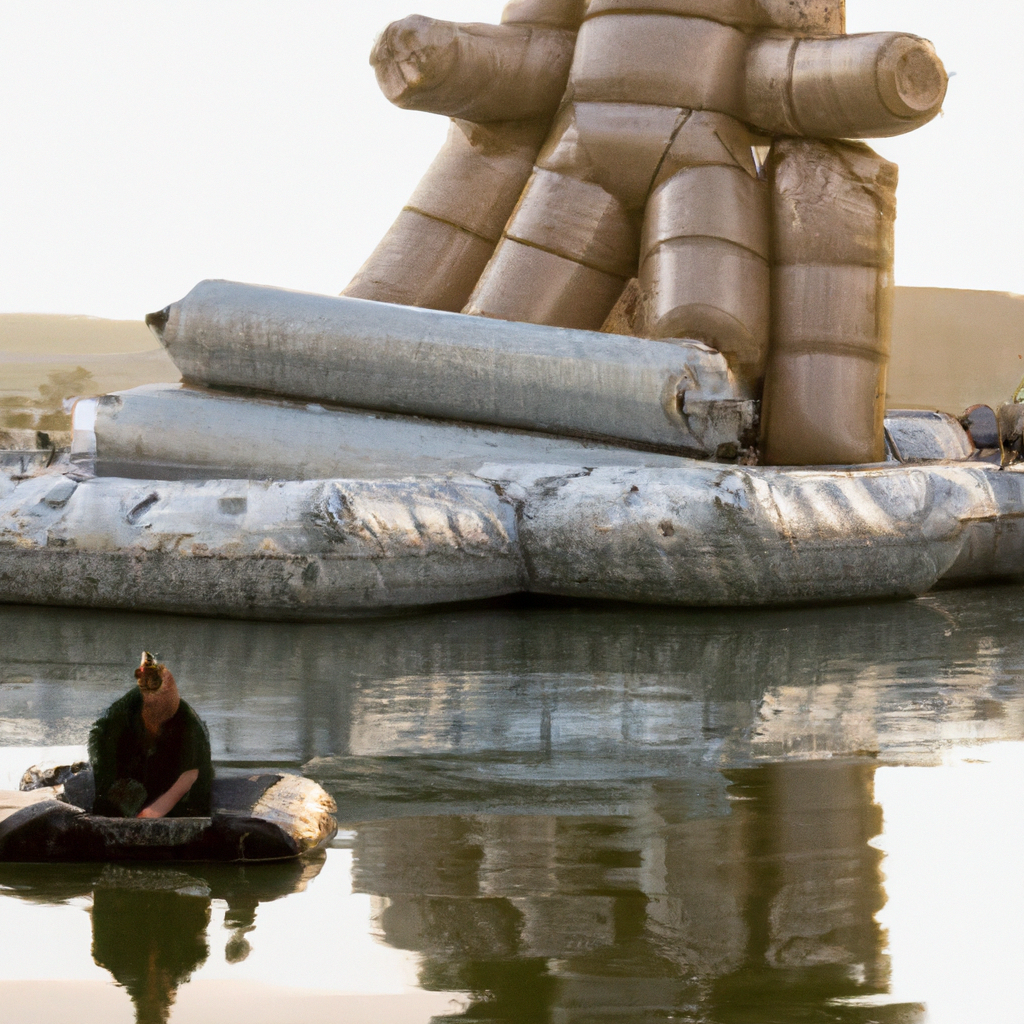
In the labyrinthine corridors of contemporary art, where provocation and profound statements often intersect, the elusive street artist Banksy has once again captured the global limelight. This time, the stage was none other than the iconic Glastonbury Festival, a bastion of cultural discourse and artistic audacity. Amidst the revelry and the rhythmic pulsations of music, Banksy chose to thrust a stark, inflatable image into the collective gaze—a raft, densely packed with figures, which floats not just through physical space but through the murky waters of political commentary.
The artwork, demeaned by UK Home Secretary as 'vile,' is not merely an object of visual scrutiny but a mirror reflecting the tumultuous waves of the migrant crisis. In his typically enigmatic style, Banksy has not just created art but catalyzed a dialogue, challenging the onlooker to reevaluate the ongoing humanitarian debacle at sea—a poignant reminder of the desperate voyages undertaken by countless individuals in search of sanctuary.
Banksy’s retort to the criticism was devoid of verbal confrontation; his rebuttal lay in the silent eloquence of his art. In the grand tapestry of his creations, this inflatable raft at Glastonbury is a bold thread weaving through the societal consciousness. By branding the piece as ‘vile,’ the critique unwittingly amplified the conversation Banksy intends to provoke: the visceral reaction to the raft underscores the uncomfortable truths society often averts its gaze from.
Here, in the verdant fields of Glastonbury, amidst a mélange of sound and spectacle, Banksy’s art disrupts. It compels the festival’s eclectic audience to pause and ponder the realities of displacement and despair that continue to shape global geopolitics. In a festival that epitomizes cultural richness and diversity, the raft becomes a somber tableau underscoring the paradoxes of global mobility and the barriers erected by those in power.
The dialogue around Banksy’s latest creation extends beyond the confines of art criticism into the realms of ethical responsibility and human empathy. It questions, with an unyielding intensity, the policies and perspectives that label such crises with disdain rather than compassion. Banksy, a maestro of the provocative, uses his canvas to challenge societal norms, to stir discomfort, to provoke thought, and, ultimately, to instigate change.
Through the eyes of a connoisseur of fine arts or the casual observer at Glastonbury, Banksy’s inflatable raft transcends its immediate presence as an artwork. It is a catalyst for conversation, a beacon of awareness, and a stark reminder of the ongoing struggles faced by migrants. This piece is not just a visual spectacle but a call to critical engagement and introspection within the cultural fabric of society.